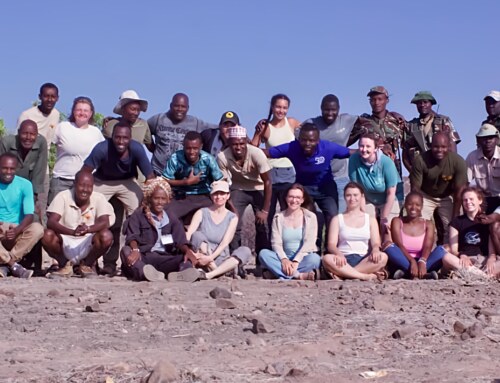Hominin’s earliest technologies and development are represented in the archaeological record through assemblages of artifacts and other material remains. The oldest of the East African stone tool industries lies in the Early Stone Age which includes the Lomekwian, Oldowan and Acheulean. These industries are classified in relation to style in production and use. Our first stop on our way to Nariokotome was at Namorutung’a pillar site near Kalokol, a Holocene site dating to about 2ooo years ago. The pillar site is characterized by large boulders with small stones on top, which are placed there by people visiting the site as a sign of respect to the ancestors. In recent years, the pillars have been subjected to vandalism by people who thought they had precious stones underneath. As of today, the sacred site still remains relevant to the Turkana people who pay homage every time they visit the area.
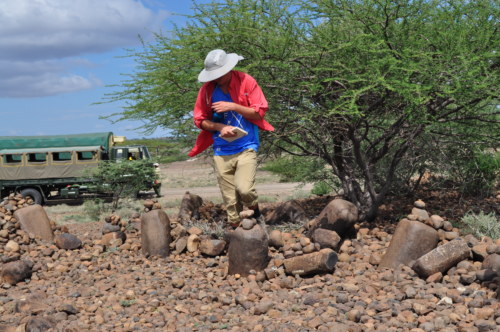
Jack pays respect. Photo credit: Wambui Mbogo.
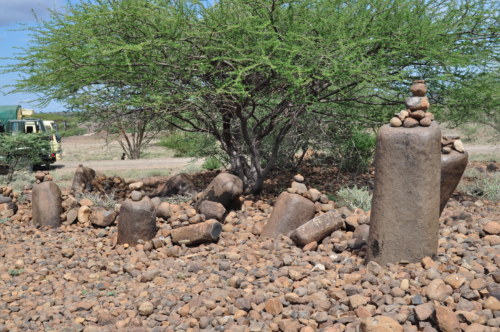
The Namorutung’a pillars. Photo credit: Wambui Mbogo.
After driving for about 2 hours, we arrived at Lomekwi 3, the site where the earliest stone tools, dated to 3.3 million years ago, were found by the West Turkana Archaeological Project team led by Dr. Sonia Harmand. The site’s geology is characterized by compact soils that are cement-like and thus provided good preservation to the stone tools found in situ during the excavation. Lomekwian tools could have been used by hominins to break open nuts or tubers as suggested by the battering marks on their surfaces. The stone tools were found in association with other fossil bones that indicated a more wooded paleoenvironment.
We got to the camp before sunset, pitched our tents, and enjoyed the cool evening breeze in Nariokotome. The next day was spent visiting sites in Kokiselei which contain an array of stone tool industries ranging from Oldowan to Acheulean. Dr. Harmand explained to students that the Oldowan tools found at Kokiselei 5 were well preserved, so refitting flakes on cores was just a matter of identifying scars. Students spread out to flag some of the cores and flakes they found at the site. We walked through time in just a matter of minutes to Kokiselei 4, the earliest Acheulean site dating to 1.76mya, where hominins started shaping symmetrical handaxes. Our last site was Kokiselei 6, an Oldowan site of the Kokiselei complex dating to 1.8mya. The presence of anvil stones in this site suggests a bipolar or passive technique in tool making. Later on, students collected phonolite to be used as cores and hammerstones for their upcoming experiments.
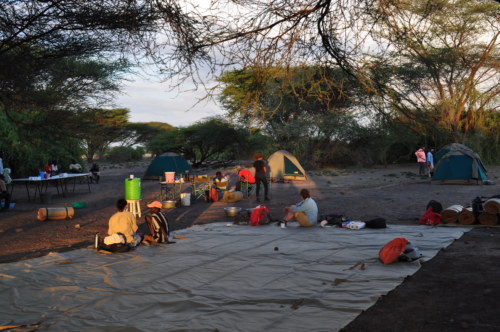
At our camping site. Photo credit: Wambui Mbogo.
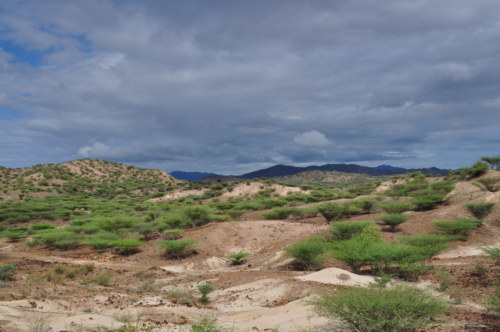
A view of the Kokiselei complex. Photo credit: Wambui Mbogo.
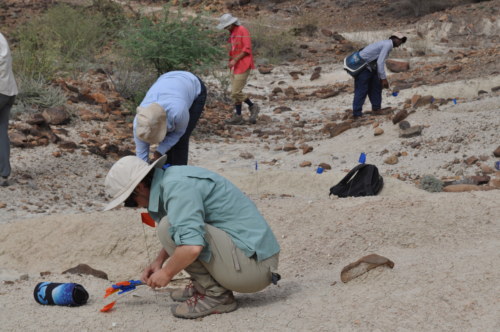
Students looking for stone tools at Kokiselei 5. Photo credit: Wambui Mbogo.
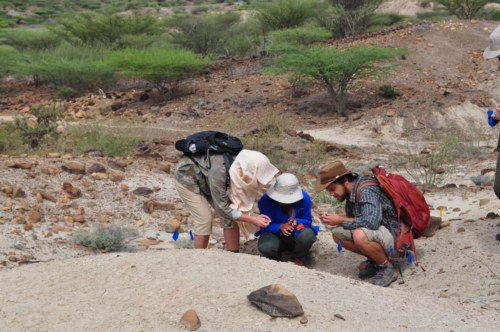
Dr. Harmand explains to Mallika and Tymofii about the type of stone tool they found. Photo credit: Wambui Mbogo.
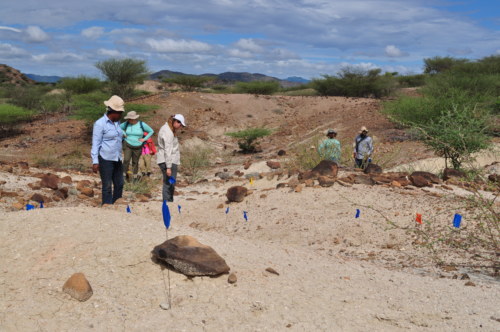
Students prospecting for stone tools. Photo credit: Wambui Mbogo.
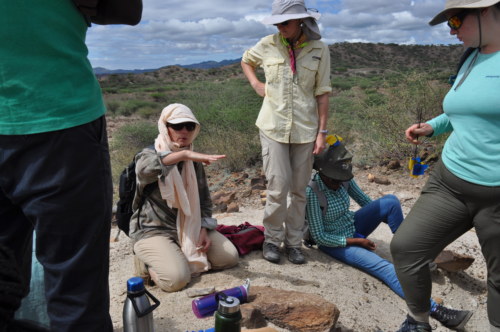
Dr. Harmand explains to students about identifying stone tools in the field. Photo credit: Wambui Mbogo.
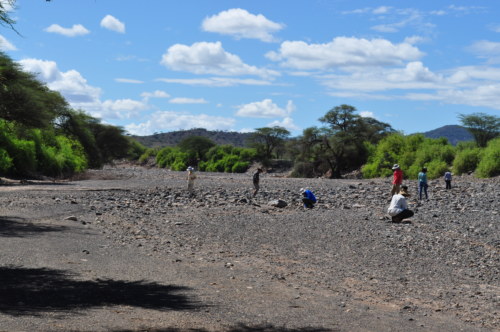
Looking for phonolites in the river bed. Photo credit: Wambui Mbogo.
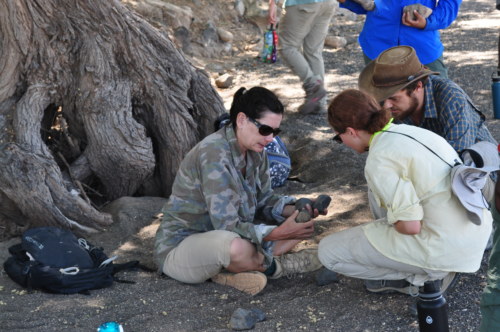
Dr. Harmand verifies phonolites for knapping. Photo credit: Wambui Mbogo.
We visited the Nariokotome boy monument, commonly referred to as ”Turkana Boy.” The nearly complete fossil skeletal remains were discovered by Kamoya Kimeu, a member of Dr. Richard Leakey’s excavation team, in 1984. The 1.6 mya Turkana Boy fossils are attributed to Homo erectus because of the low sloping forehead, strong brow ridges, and bigger brain size of about 880cc. The pelvic and limb proportions show evidence of bipedalism.
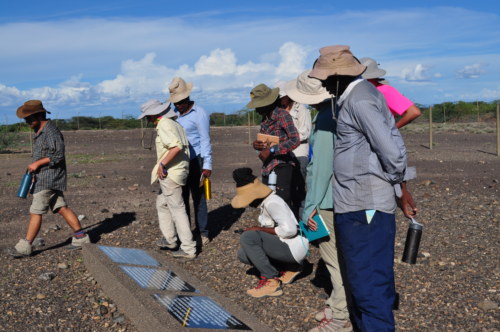
Students reading the stone slabs at the monument. Photo credit: Wambui Mbogo.
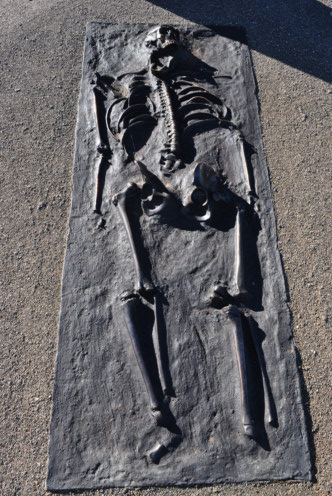
A brass skeleton of the famous Turkana Boy. Photo credit: Wambui Mbogo.
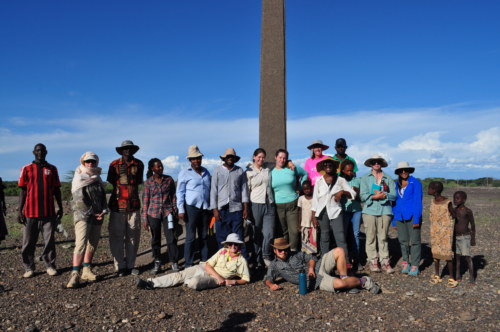
Origin Field School group photo at the monument. Photo credit: Wambui Mbogo.
A visit to Nadung’a to collect rhyolite for knapping experiments marked the end of our trip at Nariokotome. We came across a termite mound where students collected sticks to try and fish termites, a technique specialized by chimpanzees. None of the students fished out termites. Perhaps chimpanzees are exceptional tool users in the wild, or perhaps we were trying to fish in an abandoned termite mound.
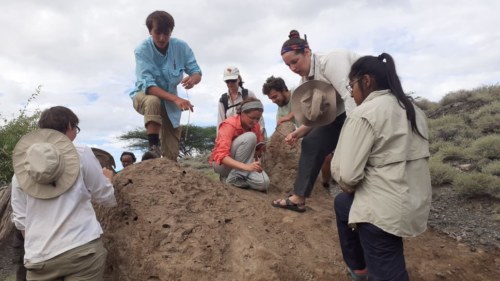
Students trying their luck fishing for termites! Photo credit: Medina Lubisia.
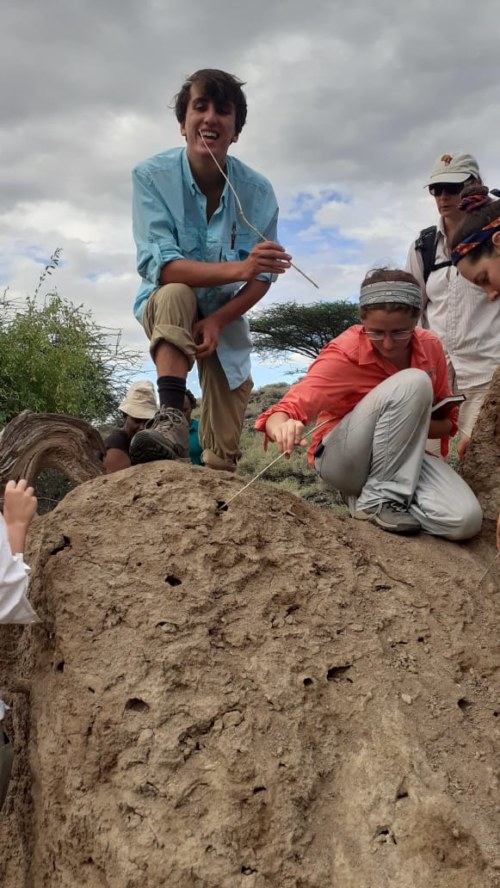
Jack tricked us! Photo credit: Medina Lubisia
Stay tuned for more updates on our last week of the Archaeology module!

